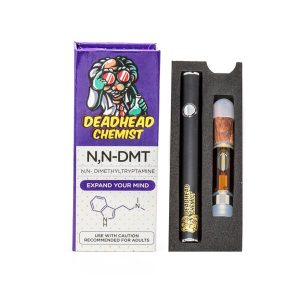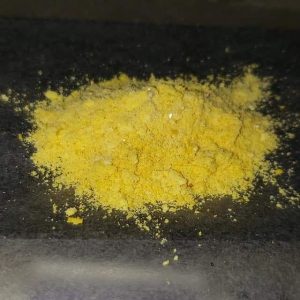Buy Dimethyltryptamine (DMT) Online , Dose: Inhalation (most common route of administration)
Light: 10 – 20 mg
Common: 20 – 40 mg
Strong: 40 – 60 mg
Oral
Common: 30 – 60 mg
DMT is typically inactive orally. This changes when it is combined with an MAOI. An example of this combination is ayahuasca, which contains Banisteriopsis caapi (MAOIs) and Psychotria viridis (DMT).
An analysis of 16 ayahuasca preparations found the following concentrations per 100 mL:
- Beta-carboline (MAOI) average: 158 mg
- Range: 20 – 401 mg
- DMT average: 29 mg
- Range: 25 – 36 mg
Another analysis yielded a similar result, with a 100 mL dose providing an average of 24 mg of DMT.
The concentrations in ayahuasca can vary significantly.
Timeline
Inhalation
Total: 10 – 15 minutes
Onset: Under 30 seconds
The effects can begin in as little as 15 seconds. Peak effects arrive between 1 and 2 minutes.
Oral
Total: 3 -4 hours
Onset: 00:30 – 00:45
Effects
Positive
- CEVs and OEVs
- Spiritual or otherwise meaningful experiences
- Euphoria
- Mood lift
- Auditory hallucinations
Negative
- Increased heart rate
- Increased blood pressure
- Fear
- Anxiety
- Paranoia
Full dose experiences
Taking DMT at a full dose (one capable of yielding a “breakthrough” experience) leads to highly variable effects. Although there’s a lot of variation, we can place the effects/experiences into groups and a general outline can be provided.
Among the common elements of an experience are:
- Full replacement of normal reality with an “alternate universe.”
- This may contain visual effects as well as seemingly sentient, intelligent, or powerful entities.
- Complex rapidly changing “kaleidoscopic” imagery
- Present with eyes open or closed.
- Colors are frequently said to be brighter and more intense than when sober.
- Some auditory changes, mainly in the form of distortions.
- Whining, whizzing, and crinkling sounds.
- Whispers are sometimes reported.
- Auditory effects are less common and less prominent than the visual alterations.
- Dissociation from the body and a disconnection from normal reality.
- The experience is ineffable.
- It’s difficult to put the effects into language and it may also be difficult to fully remember/process what occurred.
Transient anxiety is often a part of the experience, at least during the beginning portion. This can transform into euphoria, laughter, amazement, and confusion. Even though it’s not the most common response, it’s certainly possible to experience fear and anxiety during the entire effect period.
A user’s sense of time is distorted such that they may not comprehend time or it may feel like they’re in the DMT space longer than they actually are.
Levels of an experience
Benny Shanon’s stages of the DMT experience
The stage you reach depends on factors like dose and personal response.
- Bursts, puffs and splashes of colour
- Repetitive, multiplying non-figurative elements
- Geometric designs and patterns
- Designs with figures
- Rapid figurai transformations
- Kaleidoscopic images
- Well-defined, stable, single figurative images
- Proto-scenes
- Full-fledged scenes
- Interactive scenes
- Scenes of flight
- Celestial and heavenly scenes
- Virtual reality
- Supreme light
Rick Strassman’s categories
Strassman grouped the experiences by their potential core thematic element.
- Personal – Encounters with one’s own personal issues, often difficult to accept.
- Transpersonal – An experience novel in intensity and quality but formed from the subject’s previous experience. May be a mystical or near-death-type experience.
- Invisible worlds – Encounter with autonomous, freestanding realities sometimes appearing to be inhabited by alien beings capable of interaction.
He reported over half of volunteers given a high-dose had at least one “invisible worlds” experience.
Progression timeline
When the effects first take hold they tend to be described as an energetic “rush” and vibration. People report it feels like they’re being rocketed to a new location.
Your head may feel like it’s intensely vibrating. Coinciding with this effect may be sounds, usually of a high-pitch, such as whining, crinkling, or crunching.
The initial period can contain transient anxiety.
From here, the user progresses towards a detachment and dissociation from their body and environment. This leads to a breakthrough which is sometimes preceded by a short waiting period.
Waiting period
While this isn’t present for everyone, there’s sometimes a short transition phase between the “rush” and the actual breakthrough. During this period you may see complex imagery and feel like your moving, such as heading down a tunnel.
It’s possible for someone to end at this phase, often with the feeling that they’ve just barely missed entrance to a complete experience.











